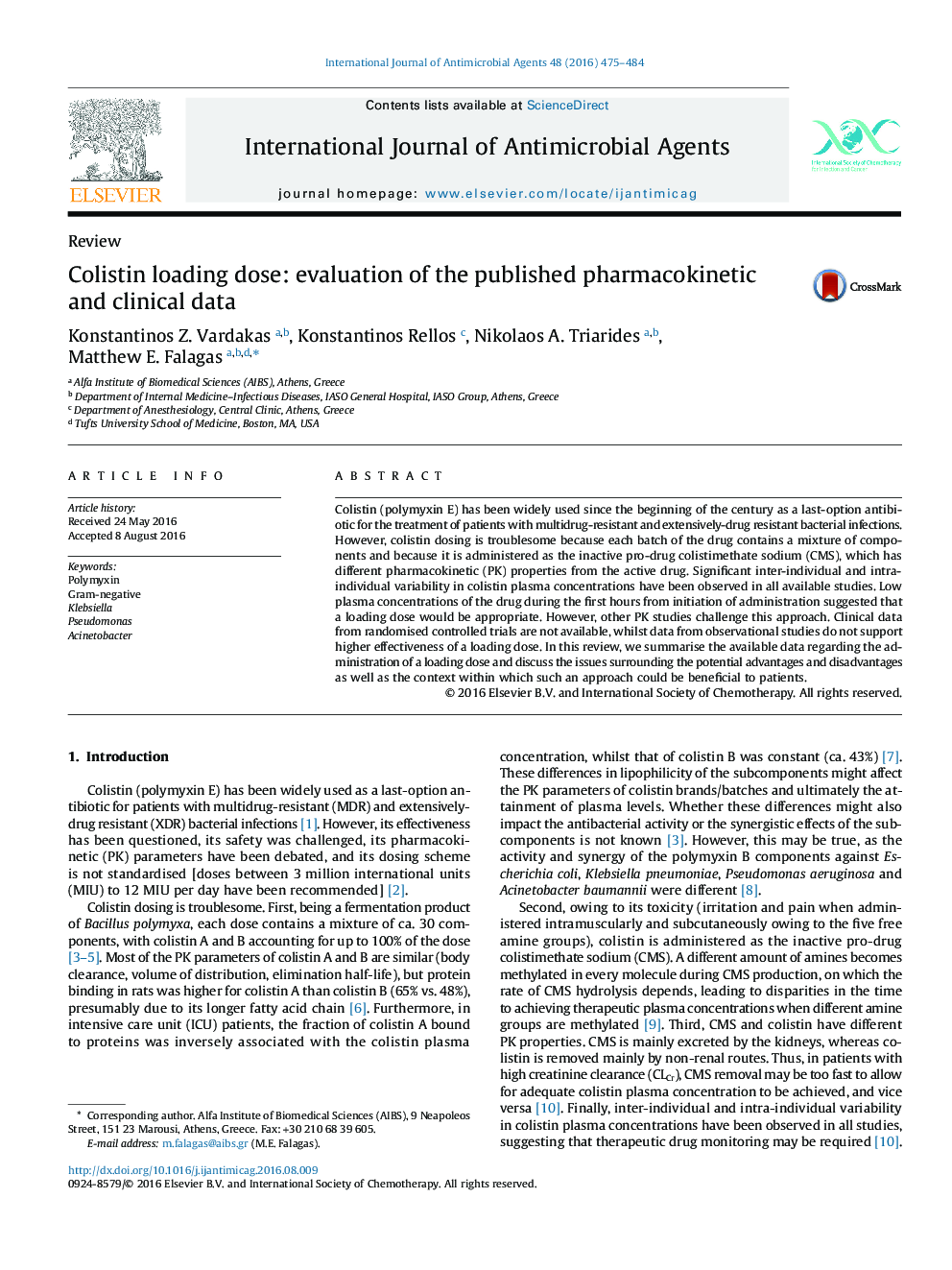| Article ID | Journal | Published Year | Pages | File Type |
|---|---|---|---|---|
| 5667054 | International Journal of Antimicrobial Agents | 2016 | 10 Pages |
â¢Significant variability in early colistin concentrations following a loading dose has been observed.â¢Data from observational studies do not support higher effectiveness of a loading dose.â¢Three ongoing RCTs evaluate the efficacy of a loading dose on mortality.â¢Direct administration of colistin instead of colistimethate sodium could predict patient outcomes more reliably.â¢Higher doses and topical administration when applicable could enhance colistin effectiveness.
Colistin (polymyxin E) has been widely used since the beginning of the century as a last-option antibiotic for the treatment of patients with multidrug-resistant and extensively-drug resistant bacterial infections. However, colistin dosing is troublesome because each batch of the drug contains a mixture of components and because it is administered as the inactive pro-drug colistimethate sodium (CMS), which has different pharmacokinetic (PK) properties from the active drug. Significant inter-individual and intra-individual variability in colistin plasma concentrations have been observed in all available studies. Low plasma concentrations of the drug during the first hours from initiation of administration suggested that a loading dose would be appropriate. However, other PK studies challenge this approach. Clinical data from randomised controlled trials are not available, whilst data from observational studies do not support higher effectiveness of a loading dose. In this review, we summarise the available data regarding the administration of a loading dose and discuss the issues surrounding the potential advantages and disadvantages as well as the context within which such an approach could be beneficial to patients.
